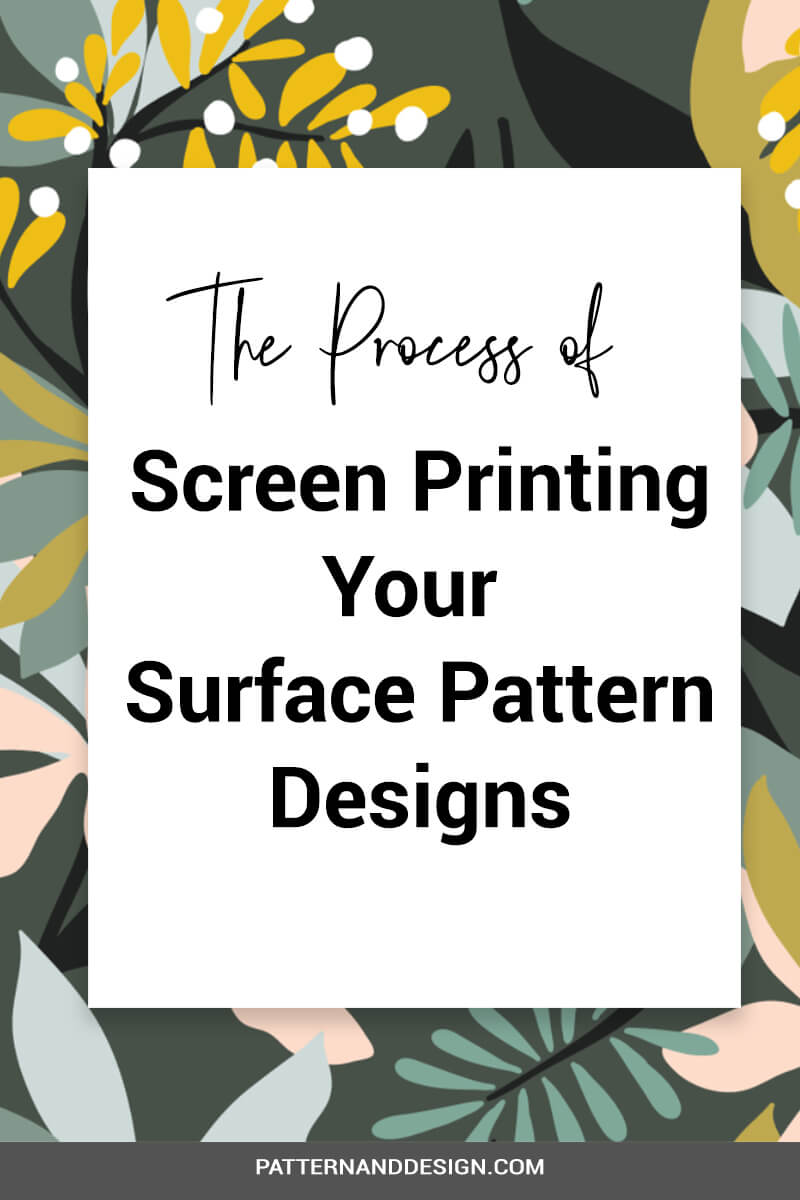learn about all things surface pattern design including the creative design process, being a successful creative entrepreneur & stepping into the mindset of a successful designer
welcome to the pattern design blog
blog
The
Categories
Popular
The process of screen printing your designs
Have you ever wondered about the process of screen printing your designs onto fabric and what’s involved? Knowing this process will actually help you when you are creating designs that are going to be screen printed.
Colour separation
The first thing that you need to think about when you are screen printing a design is that each colour equals a different screen. The more colours you have, the more screens that you need. So what you need to do when you’re creating your artwork is to make sure that each colour is on a separate layer or in a separate file so that each of the colors in the artwork can easily be put them onto a different screen.
Preparing the screen
Before you can transfer your artwork to the screen there are a few steps that need to be done.
Firstly, you need to make sure that your screen is clean screen.
Once it is clean, you will then coat it with photographic emulsions. This is a special kind of paste that you put onto the screen ensuring that you coat it and let it dry in a dark place away from sunlight.
You next want to transfer your artwork on to the screen onto film. You can either choose to print it onto the film or paint it by hand with opaque paint. The most important thing that you need to think about at this stage is that when you hold the transparent film up to the light, the areas of your artwork that have been painted should be opaque (and you shouldn’t be able to see through them).
Expose your screen
Once your artwork has been prepared you want to expose it onto the screen you have prepared. You will do this by sticking the artwork on the film to the screen and then exposing the screen to light.
You will then take your screen to a wash trough and your wash it thoroughly. The opaque sections won’t be exposed and therefore will wash out. Once it’s washed thoroughly, you should be able to hold your screen up to the light. Your artwork will be see through mesh and the rest of the screen will be opaque as the photo emulsion will have hardened on the screen and you won’t be able to push any of your print paste or dye or whatever through those areas.
For each of the colours you want to print, you will need to prepare a separate screen. If you are printing with multiple colours and they need to line up then you will also need to make sure you have registration marks set in place e.g. if you have a flower head and a stem and the stem needs to join in an exact position, you need to make sure that you register it properly.
Printing your design
Before you start printing, you will need to lay out and secure your fabric to a printing table so that it’s nice and tight.
You can then place your screen in the appropriate position, add your printing medium e.g. print paste or dye in a well at the bottom of the screen. You will then get your squeegee, and pass it up and down, over the screen. The printing medium will go through the transparent areas of your screen on to your fabric.
So that’s a very simplified, basic version of how to get your designs screen printed onto fabric. It’s great to have an understanding of this because if you are designing for designs that are going to be screen printed it’s helpful to have an understanding of the process involved as this will help when you are developing your designs creating your design to ensure they can be screen-printed successfully.

Want to create another revenue stream by turning your art into surface pattern designs?
Get the free guide
Get my FREE Surface Pattern Design Starter Guide